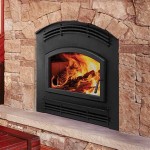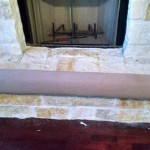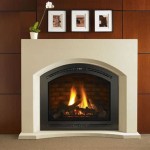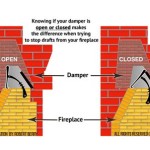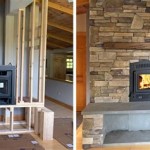```html
How To Hang A Heavy Fireplace Mantel
Hanging a heavy fireplace mantel is a task that demands careful planning, precise execution, and a thorough understanding of both structural integrity and aesthetic considerations. A fireplace mantel serves as a focal point in a room, enhancing its visual appeal and providing a surface for decorative items. However, due to the significant weight of many mantels, particularly those made from solid wood or stone, proper installation is crucial to ensure safety and prevent damage to the wall or the mantel itself. This article provides a comprehensive guide on how to hang a heavy fireplace mantel securely and effectively.
Assessing the Wall and Mantel
Before commencing the installation process, it is essential to thoroughly assess both the wall structure and the mantel’s characteristics. This preliminary evaluation will dictate the necessary tools, materials, and installation techniques.
First, identify the wall type. Common wall types include drywall, plaster, brick, and stone. Drywall and plaster walls generally require more robust support systems due to their limited load-bearing capacity compared to brick or stone. Locate the wall studs using a stud finder. These vertical framing members provide the most secure anchor points for the mantel. Mark the stud locations clearly on the wall with a pencil. If dealing with a brick or stone wall, the presence and condition of the mortar joints are important factors. Weak or crumbling mortar will require repair before proceeding with the installation.
Next, determine the mantel’s weight. This can be achieved using a bathroom scale or by consulting the manufacturer's specifications. Understanding the mantel's weight is paramount in selecting appropriate mounting hardware and techniques. Also, measure the dimensions of the mantel, including its length, depth, and height. This information is necessary for determining the placement of the mounting brackets and ensuring proper alignment on the wall. Note the material composition of the mantel. Is it solid wood, engineered wood, stone, or another material? Different materials have varying densities and react differently to screws and other fasteners.
Carefully inspect the mantel for any existing hardware or pre-drilled holes. If present, utilize these features whenever possible to simplify the installation process. If not, determine the optimal locations for installing mounting brackets, considering both structural support and aesthetic appeal. Ensure that the chosen locations are evenly spaced and able to bear the weight of the mantel without causing stress or damage.
Selecting the Appropriate Mounting Hardware
The selection of appropriate mounting hardware is paramount to the successful and safe installation of a heavy fireplace mantel. The hardware must be capable of supporting the mantel’s weight and providing a secure connection to the wall structure. In selecting the correct hardware, several factors need consideration.
Consider the wall type and material when selecting anchors. For drywall or plaster walls, heavy-duty drywall anchors or toggle bolts anchored directly into the studs are recommended. These anchors are designed to distribute the weight of the mantel over a larger surface area, preventing the screws from pulling out of the wall. For brick or stone walls, masonry screws or expansion bolts are necessary. These fasteners are specifically designed to penetrate hard materials and provide a secure hold. Predrilling pilot holes is essential when using masonry screws or expansion bolts to prevent cracking or damaging the brick or stone.
Determine the appropriate size and type of mounting brackets. Various types of brackets are available for fireplace mantel installation, including L-shaped brackets, Z-shaped brackets, and floating mantel brackets. L-shaped brackets are typically used for mantels that rest directly on the firebox or hearth, while Z-shaped brackets provide a concealed mounting system. Floating mantel brackets create the illusion of a floating mantel by hiding the support system behind the mantel. The size and number of brackets required will depend on the weight and dimensions of the mantel.
Choose screws or bolts of the correct length and diameter. The length of the screws or bolts should be sufficient to penetrate the wall studs or masonry at least two inches. The diameter of the screws or bolts should be appropriate for the size of the mounting brackets and the weight of the mantel. Use high-quality screws or bolts made from steel or stainless steel to prevent corrosion and ensure long-term durability.
Consider using construction adhesive in conjunction with mechanical fasteners for added stability. Construction adhesive can provide an additional layer of bonding between the mantel and the wall, further distributing the weight and preventing movement. Apply a generous bead of construction adhesive to the back of the mantel before attaching it to the wall. Ensure that the adhesive is compatible with the mantel material and the wall surface. Test the adhesive on an inconspicuous area first to confirm compatibility and prevent discoloration or damage
Step-by-Step Installation Process
Following a systematic and precise installation process is critical for achieving a stable and aesthetically pleasing result. Below are the steps to follow when hanging a heavy fireplace mantel. Prior to starting, it's crucial to emphasize safety. Always wear safety glasses and gloves during the installation process. If the mantel is exceptionally heavy, enlist the assistance of a second person to help lift and position it. Ensure the work area is well-lit and free from obstructions.
First, accurately mark the desired location of the mantel on the wall. Use a level to ensure that the mantel will be installed straight. Then, use a pencil to mark the position of the top edge of the mantel, as well as the locations of the mounting brackets. If installing multiple brackets, use a measuring tape to ensure that they are evenly spaced and aligned correctly. Verify the measurements and markings before proceeding to the next step.
Now, install the mounting brackets. Position the brackets at the marked locations on the wall, aligning them with the stud locations whenever possible. For drywall or plaster walls, use a drill to create pilot holes for the screws or bolts. Insert the appropriate anchors into the pilot holes and tighten them securely. For brick or stone walls, use a masonry drill bit to create pilot holes for the masonry screws or expansion bolts. Insert the screws or bolts through the brackets and into the pilot holes, tightening them until they are snug. Do not overtighten the screws or bolts, as this could damage the brackets or the wall.
Carefully lift the mantel into position and align it with the mounting brackets. If using L-shaped brackets, rest the mantel on the brackets and secure it with screws or bolts. If using Z-shaped brackets or floating mantel brackets, slide the mantel onto the brackets until it is fully engaged. Ensure that the mantel is level and flush against the wall. If necessary, use shims to adjust the position of the mantel and ensure that it is perfectly aligned.
Secure the mantel to the brackets. Using screws or bolts that are appropriate for the mantel material, secure the mantel to the mounting brackets. If using wood screws, pre-drill pilot holes to prevent splitting the wood. Tighten the screws or bolts until they are snug, but do not overtighten them, as this could damage the mantel. If using construction adhesive, apply a bead of adhesive to the back of the mantel before securing it to the brackets.
Perform a final inspection and make any necessary adjustments. Once the mantel is fully installed, inspect it carefully to ensure that it is level, secure, and properly aligned. Give the mantel a gentle shake to check for any movement or instability. If necessary, tighten the screws or bolts or add more shims to improve the stability of the mantel. Clean up any debris and tools from the work area.
In conclusion, installing a heavy fireplace mantel requires meticulous planning, careful execution, and the use of appropriate tools and materials. By following the steps outlined in this guide, individuals can successfully install a mantel that is both structurally sound and aesthetically pleasing, adding a touch of elegance and warmth to their homes. Remember that if any uncertainty arises during the installation process, consulting a professional carpenter or contractor is always a prudent decision.
```
How To Install A Floating Mantle The Easy Way In Just One Afternoon

Fireplace Mantel Installation Tips

Fireplace Mantel Installation Tips How To Antique Woodworks

How To Install A Floating Mantle The Easy Way In Just One Afternoon

Fireplace Mantel Installation Before And After

How To Install A Floating Mantle The Easy Way In Just One Afternoon

Fireplace Mantels Installation Care Redwood Burl Inc

Fireplace Mantel Installation Tips

How To Install A Floating Mantle The Easy Way In Just One Afternoon

Installing A Heavy Wood Mantel 2024 Beginners Guide
Related Posts

